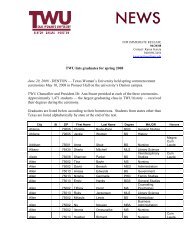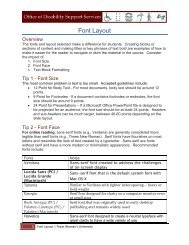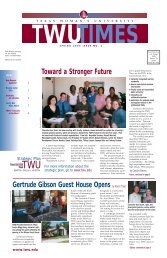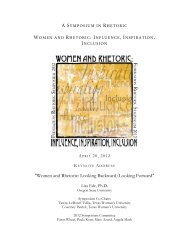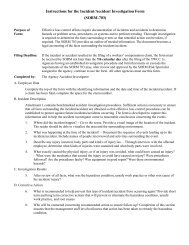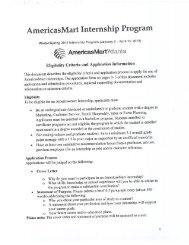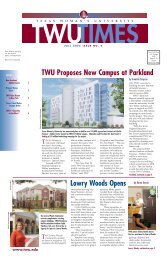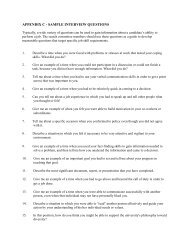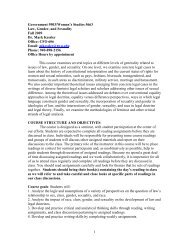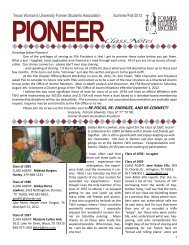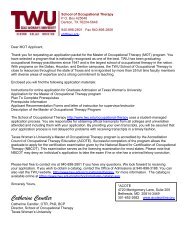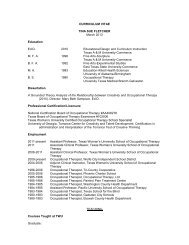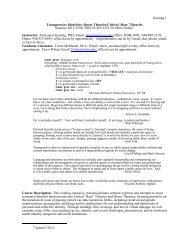HUMPHRIES' ASSESSMENT OF AQUATIC READINESS (HAAR) A ...
HUMPHRIES' ASSESSMENT OF AQUATIC READINESS (HAAR) A ...
HUMPHRIES' ASSESSMENT OF AQUATIC READINESS (HAAR) A ...
You also want an ePaper? Increase the reach of your titles
YUMPU automatically turns print PDFs into web optimized ePapers that Google loves.
established and achieved. When the individual has accomplished balance restoration,<br />
prevention of loss of that balance while maintaining the initial position or posture of the<br />
task can be achieved. This step is known as inhibition. The final step in the progression is<br />
that the individual is able to facilitate—capable of mentally and physically controlling the<br />
overall movement—the task (Nicol, Schmidt-Hansberg, & McMillan, n.d). From this<br />
normal progression, the phases of the Halliwick Method were developed.<br />
The Halliwick Method is broken down into mental adjustment, balance,<br />
restoration, inhibition, and facilitation (Nicol et al., n.d). With the scientific principles of<br />
hydrodynamics and body mechanics driving it, these components were placed into one of<br />
four different phases. The hydrodynamic and body mechanics principles associated with<br />
the Halliwick Method focus on the ability to maintain a floating position. According<br />
Nicol, Schmidt-Hansberg, and McMillan, there are two different approaches that can be<br />
utilized in order to understand how to achieve different floating positions. The first<br />
approach was developed by Nicol and Krüger in 1979. It utilizes a capacitance-type<br />
waterproof force platform. The platform is placed on the bottom of the pool under the<br />
individual. This provides a buoyant force thus influencing changes in the shape of the<br />
body on the supportive buoyant force that is keeping it afloat. The second approach uses<br />
a wooden model of the body to help understand how different positions that the body can<br />
take in the water can affect its capability to float. This model creates differences in<br />
overall body density by having the capability to replace some of the wooden limbs with<br />
limbs that are filled with various things (e.g. air and lead).<br />
From the approaches used to understand how to achieve different floating<br />
positions, Nicol, Schmidt-Hansberg, and McMillan also identify two ways to correct<br />
12



